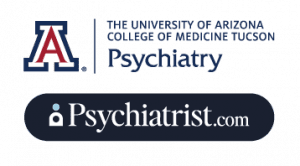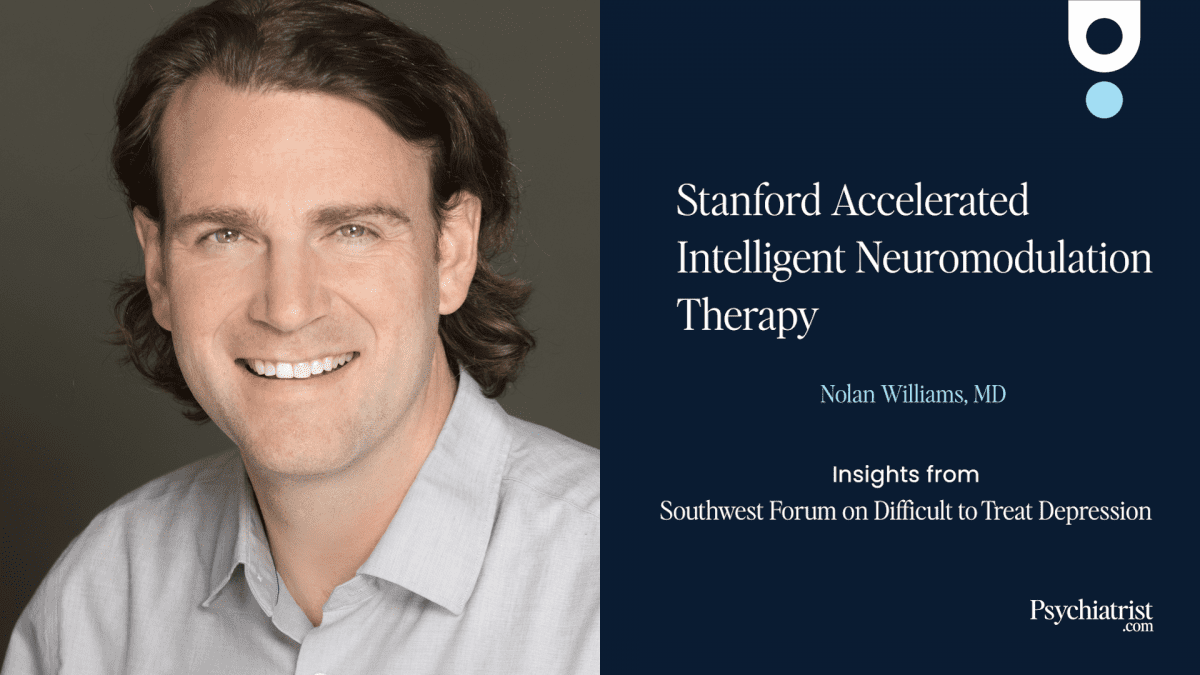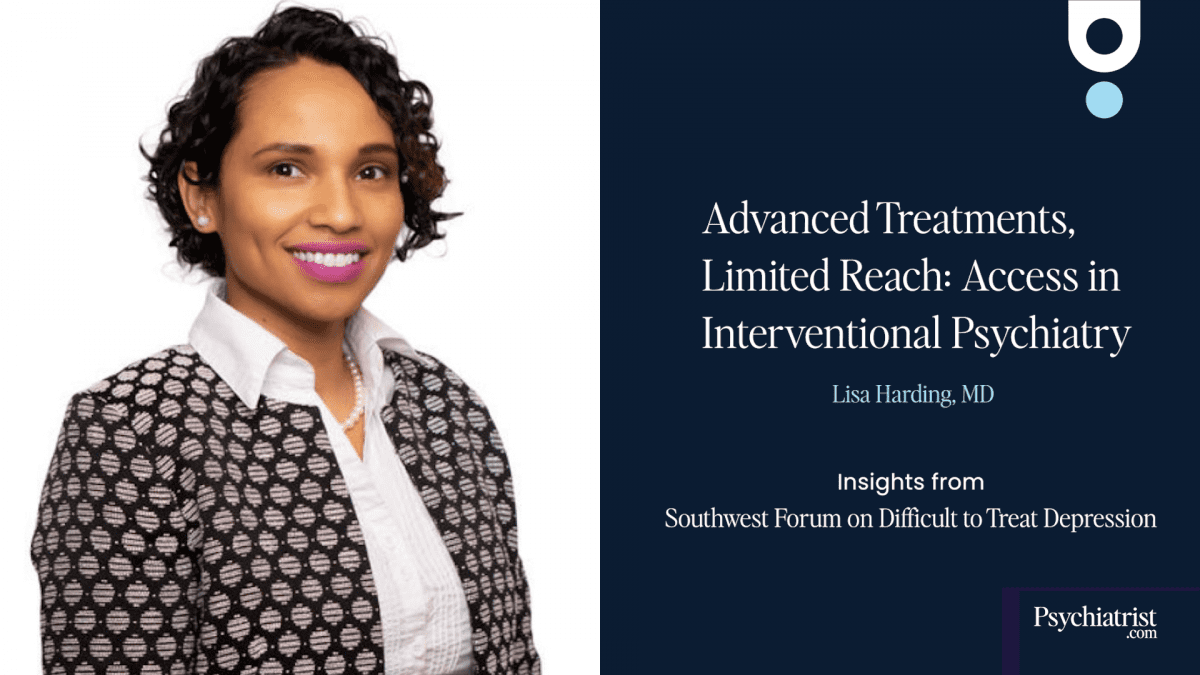Ilse Wiechers, MD – associate professor at both University of California San Francisco and Yale University School of Medicine – is a practicing, board-certified adult and geriatric psychiatrist. She’s also the deputy executive director of the Office of Mental Health (OMH) at the Department of Veterans Affairs. She’ played a critical role in developing the VA’s portfolio of innovative mental health treatments, including ketamine, esketamine, and psychedelic-assisted therapy.
In her discussion, Wiechers talks about her experiences dealing with veterans who struggled with difficult-to-treat depression and how some of these more novel approaches can help. But access to care, funding, and communication still present challenges.
Ilse Wiechers, MD, MPP, MHS
Deputy Executive Director
VHA Office of Mental Health
Menlo Park, CA
| This presentation was part of the “Southwest Forum on Difficult to Treat Depression: Focus on Approach, Algorithms, and Access” in July at the Arizona Biltmore in Phoenix. Psychiatrist.com worked with the University of Arizona College of Medicine – Tucson Department of Psychiatry.
To learn more and watch more videos, visit our Difficult to Treat Depression Clinical Resource Center. |
  |
|---|
Transcript
(0:13 – 1:27) Importance of Treatment Algorithms
Understanding treatment algorithms and the options that we have available for treatment of treatment resistant depression is especially important for those of us who practice and work with veterans and military service members, given the high rates of treatment resistant depression in those populations. The VA/DoD, Clinical Practice Guideline for the Management of Major Depressive Disorder, was recently updated in 2022. This clinical practice guideline provides great guidance both for primary care providers as well as for specialty mental health care providers who are treating veterans and service members with major depressive disorder.
The clinical practice guideline includes an algorithm that helps walk providers through the steps needed for treatment, both of initial cases of depression as well as advanced care management for more difficult to treat depression. You can see here reference to what we call the infamous sidebar number five. Sidebar five speaks to what those treatment options are that are evidence-based and have strong chance of helping our veterans and service members who have not responded to adequate treatment trials before.
(1:27 – 2:48) Navigating Treatment Options
You can see here the options recommended, including other pharmacotherapy options such as MAOIs and TCAs, electroconvulsive therapy, repetitive transcranial magnetic stimulation, and ketamine or esketamine. However, how do we choose between those options? This is an uncharted path, one that is sometimes puzzling and confusing for providers. And this is where the art of our clinical practice comes into play.
As you’ll note from the language included in the box of the algorithm that speaks to sidebar five, it asks people to base this decision on patient preferences and characteristics. And the workgroup for the VA/DoD clinical practice guideline chose those words purposefully. There’s very little literature that directly compares treatment of these options, especially for some of the newer treatments like ketamine and esketamine.
Essentially, our existing literature shows that all of these different treatments work, but have varying trade-offs and risks. And this is why it’s so important to have a shared decision-making conversation with your patient about which option would be best for them. The other thing to take into consideration when reviewing these different treatment options in the algorithm is to think about what resources are available to you.
(2:48 – 4:05) Shared Decision-Making and Resource Considerations
These are all relatively complex interventions, more so than simply prescribing medications. And these complex interventions require significant resources. And in the case of rTMS, ECT, ketamine, and esketamine require the patient coming in to an actual office or hospital space to be treated in person.
So if we don’t have clear guidance that points us to one or another of these treatment recommendations, how are people actually choosing? And what are the choices being made? We looked at some of the data available from the Veterans Health Administration from our annual reporting on somatic treatment availability, and decided to use this as a way of showing us where veterans and their providers are making these choices. And you can see here data going back to fiscal year 15 and then tracking forward to the most recent bar being fiscal year 22. And you can see that we have a large number of facilities that offer ECT treatment to veterans, a few less with rTMS, and then less still with ketamine and esketamine in terms of available treatment options at those facilities.
(4:05 – 5:53) Treatment Availability and Challenges
But those numbers have been growing since fiscal year 20 going up. So we can see sort of a bit of a decrease in ECT, an increase in growth in rTMS, ketamine, and esketamine. Similarly, looking at the data for VA patients and number of patients treated, you can see a large increase over recent years of patients receiving rTMS, a decrease in our ECT, and an increase in IV ketamine and esketamine over time.
This helps give us a picture of where veterans are actually getting their treatment and what type of treatments they’re getting. So what do we learn from this data? Well, the good news is we’ve learned that availability across the board at VA facilities, and in terms of number of veterans being treated, has increased. And that’s great news because, number one, that means more of our veterans are accessing these helpful treatments and these guideline-recommended treatments.
And also it’s good news because these, as I mentioned before, are pretty complex interventions, and it’s good to know that facilities have been taking the time, the energy, and the resources necessary to stand up these services for their veterans. We still have some challenges ahead, though. Fewer facilities are offering ECT, even though that is the treatment modality with the strongest evidence base, going back furthest in time.
And what we also notice is that the facilities that offer one offer more than one, so the rich are getting richer, so to speak. We have expansion at facilities that already have some capacity, but we still have areas of the country and facilities where none of these treatments are available, and so that’s a challenge for us as a system moving forward. And then overall, just if you look at the total number of veterans being treated with one of these modalities, we’re probably deeply under-treating the veterans with treatment-resistant depression.
(5:53 – 8:13) Key Takeaways
And so that’s an area where we really need to continue to move forward and try to increase numbers treated. So the key takeaways here are that we have a really beautiful algorithm that a lot of folks worked hard on to create, and they can really help guide us in our treatment choices, both for initial treatment of major depressive disorder and for treatment-resistant depression or difficult-to-treat depression. But we still have hard choices to make with our patients, and engaging our patients in those decisions is going to be key as we think about difficult-to-treat depression.
We have a lot more need for research that directly compare these treatment options that we have to help guide our choices with our patients, but also to try to help identify which subsets or cohorts of our patients would most benefit from a particular treatment. And, of course, we still have need for more innovative and better treatments overall for treatment-resistant depression. Given these are complex interventions that require significant resources and in-person treatment, they are a challenge to implement, but I think given what we see, at least as an example from the Veterans Health Administration, we can make this happen with a focus and attention on expanding access.
We can grow the number of our patients who have access to these lifesaving treatments. Providers can use this information today with their patients by going to the VADOD clinical practice guidelines and taking a look at that algorithm, reminding themselves of the evidence available that supports the different treatment options we have, and then engaging their patients in conversations about which of these might be best for them and what’s available locally nearby. I would encourage providers to engage their patients in conversations, reviewing the evidence that helps support our available treatment options, including ECT, rTMS, ketamine, and esketamine, and then helping with that patient to review what makes the most sense for them, reviewing the risks and the benefits for each of those treatments, as well as what’s available nearby and convenient for that patient to access. All of these are good treatment options, but each individual patient will have needs and considerations that will help you guide that patient to the treatment that’s best for them.



